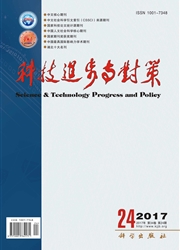

 中文摘要:
中文摘要:
后发国家企业为抢占新兴产业发展优势,着力推进新兴产业赶超。然而,后发国家企业在赶超过程中,面临赶超能力不强、先发企业技术阻击和市场排挤等情况,亟需国家政策扶持。以GVC(全球价值链)为视角,运用钻石模型分析了后发国家发展新兴产业的优劣势,从供给推动、需求拉动和环境支撑3个维度构建了后发国家扶持政策框架,并借助该框架对中韩两国扶持高铁产业赶超的政策工具进行了比较分析。结合理论和案例分析指出,后发国家应从供给推动、需求拉动以及环境支撑等角度,从强化技术挟持、资金支持、人才建设、制度变革、资源开发和市场突围等方面制定政策工具,以扶持后发国家新兴产业的技术赶超。
 英文摘要:
英文摘要:
To seize the firstGmover advantage in emerging industries,enterprises of late coming countries are focusing on the implementation of new industry.However,in the catchGup process,latecomer enterprise not only facing the facts its innovation capability is weak,and often encounter developed countries'technical blocking and market exclusion,therefore there is the need for policy support from the government.This paper based on perspective of GVC (global value chains), used the diamond model to analyze the latecomer's advantage and disadvantage of emerging industry,thus create threeGdiG mensional policy framework of latecomer to catch up from supplyGpush,demandGpull and environmentGconstruct.With the framework,we explore the policy tools of China and Korea to support highGspeed rail.Finally,this paper pointed out that the government should strengthen technological breakthrough,financial support,personnel development,regime innovaG tion,resource development and market breakthrough to support latecomer to catch up.
 同期刊论文项目
同期刊论文项目
 同项目期刊论文
同项目期刊论文
 期刊信息
期刊信息
